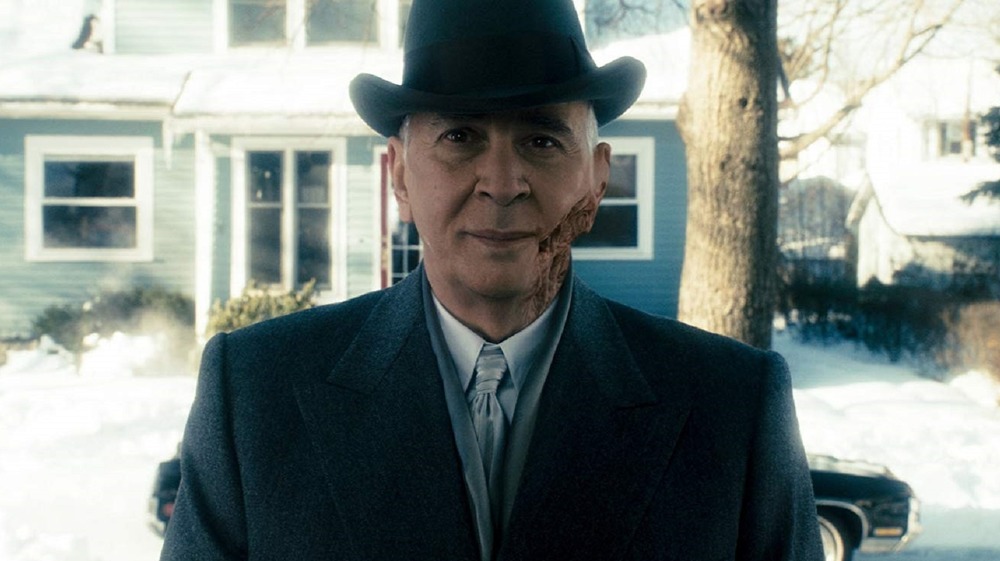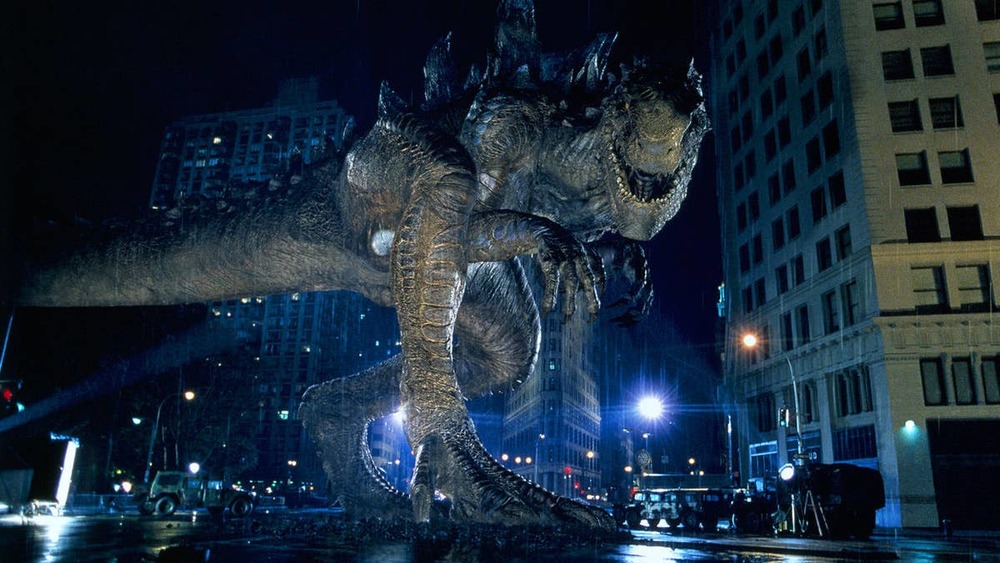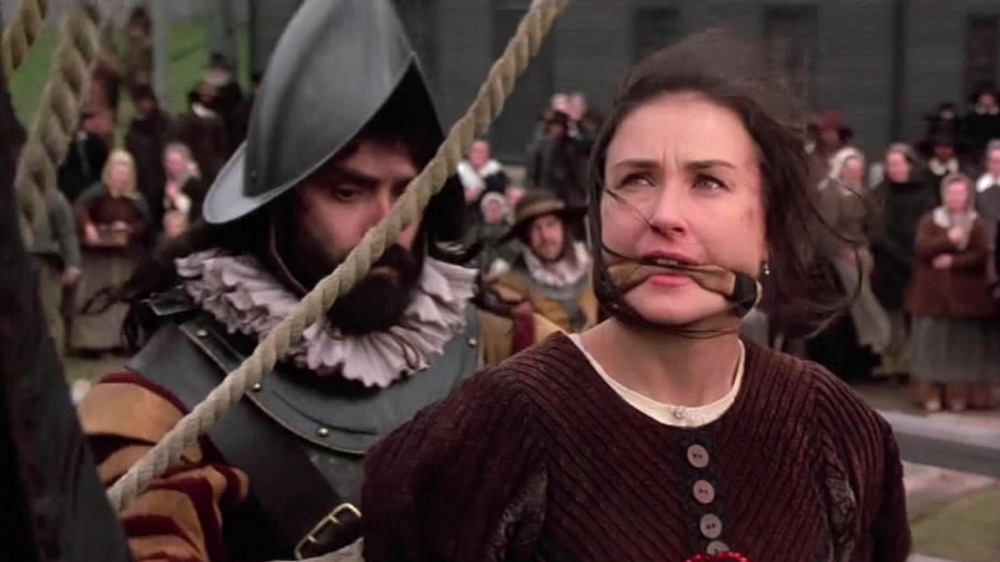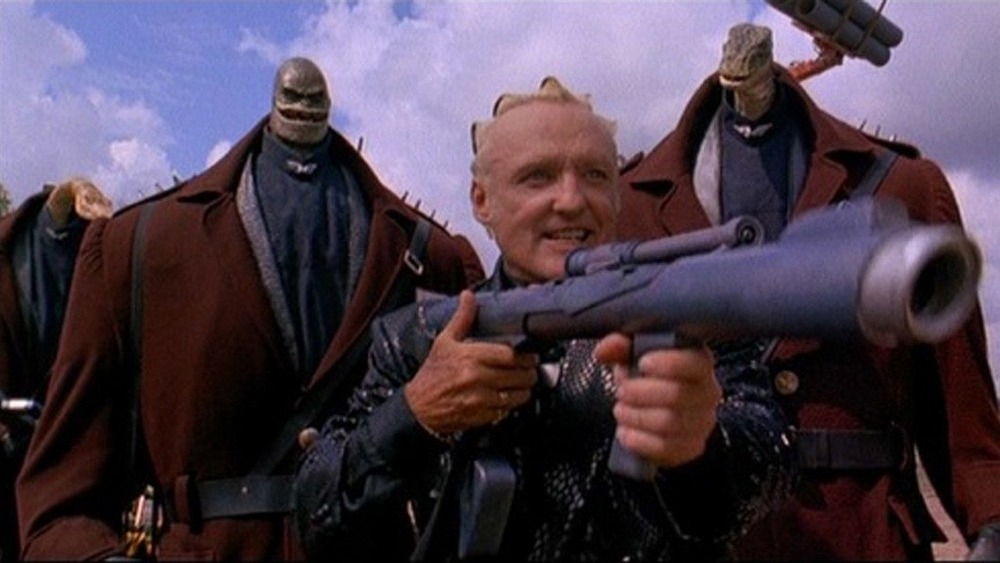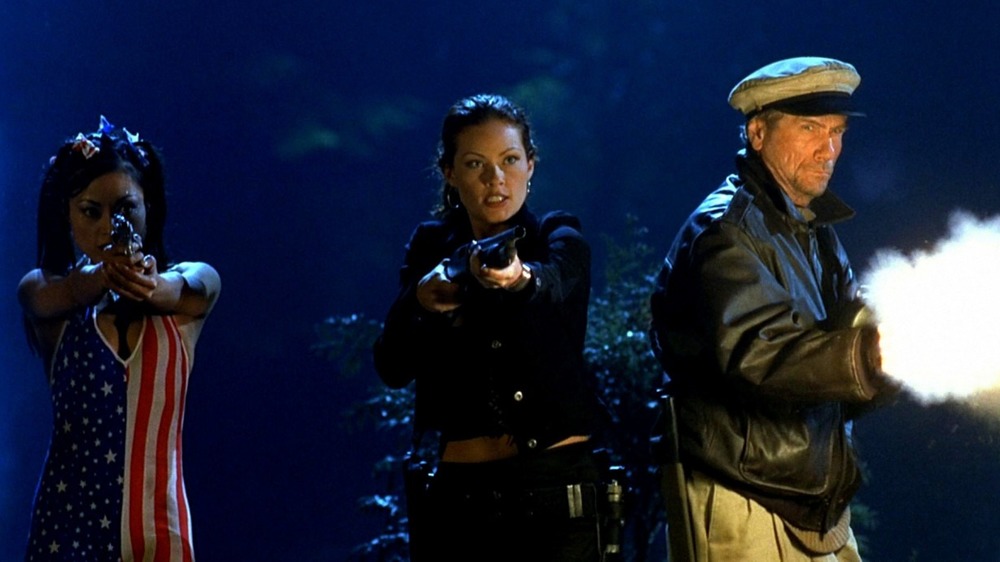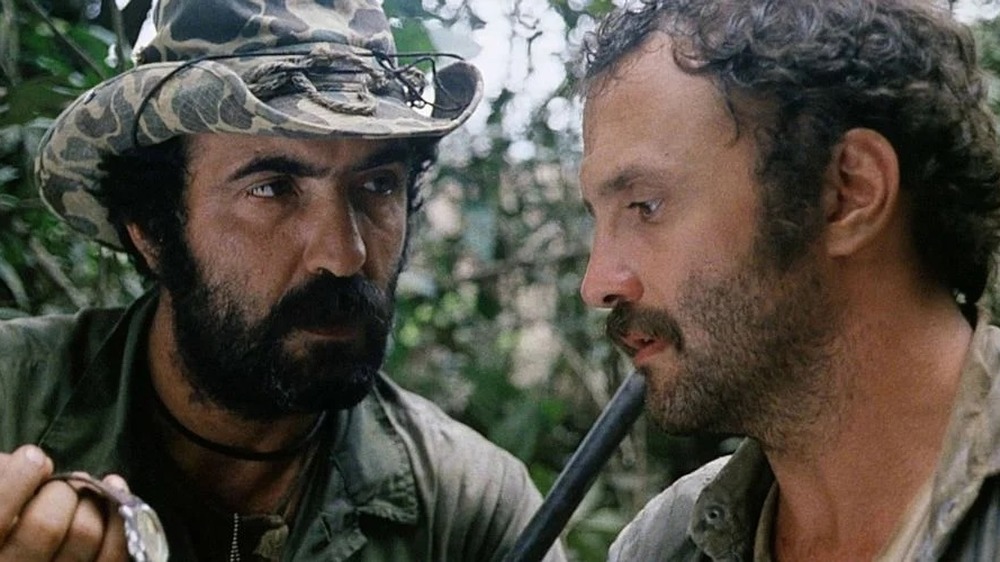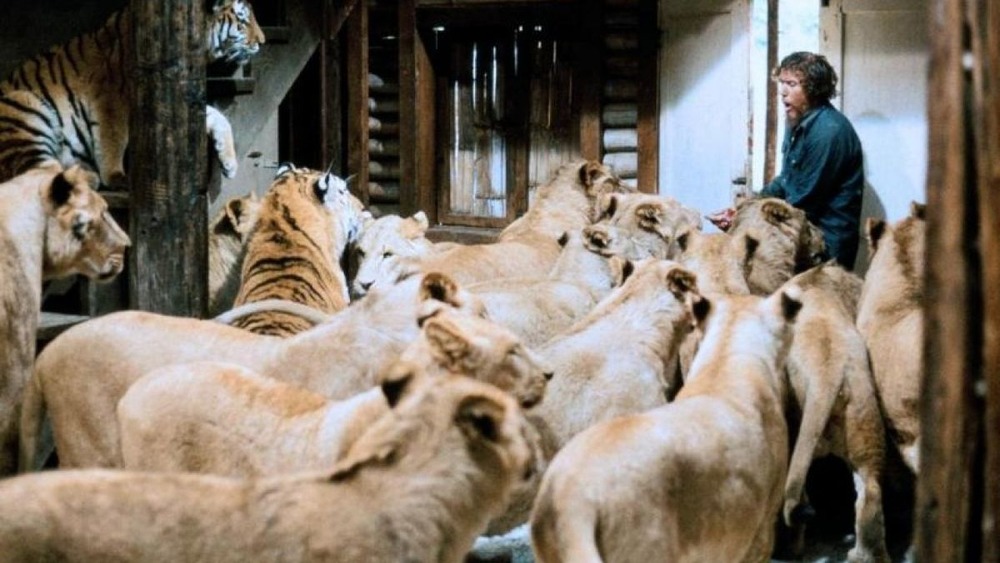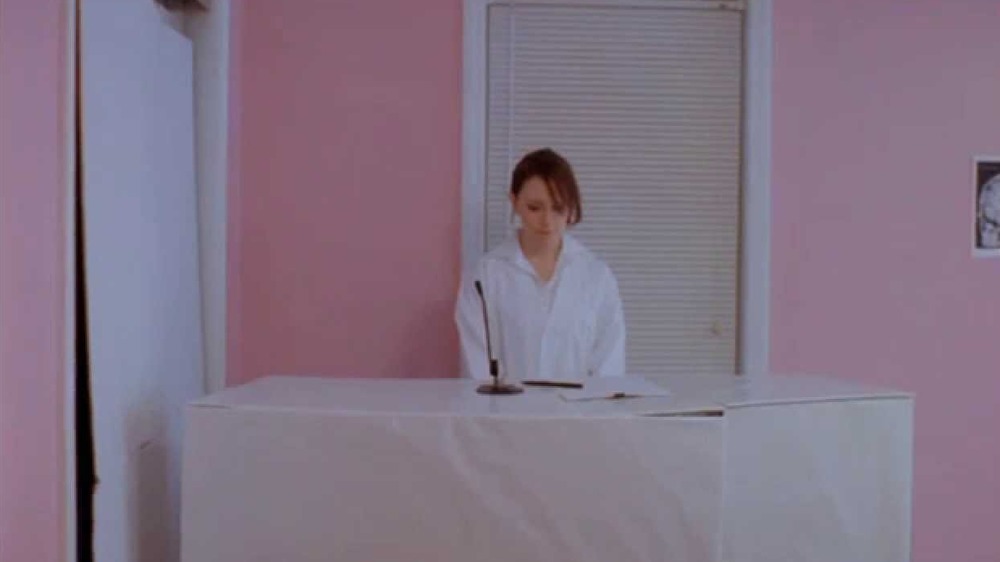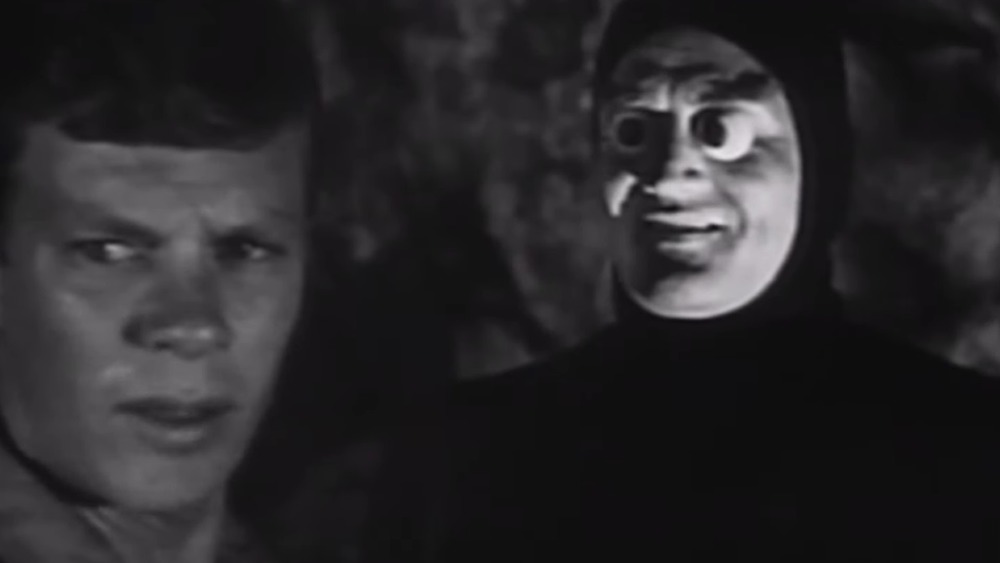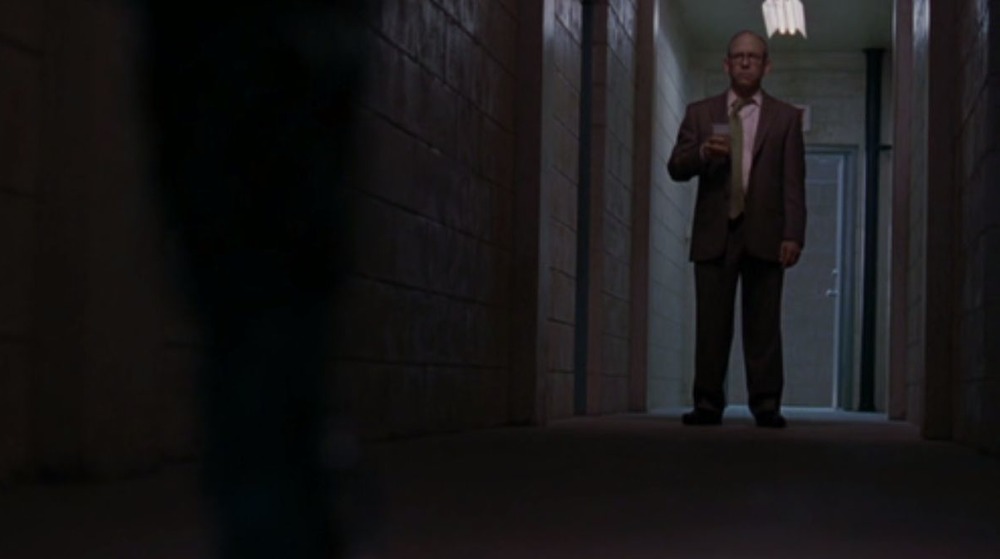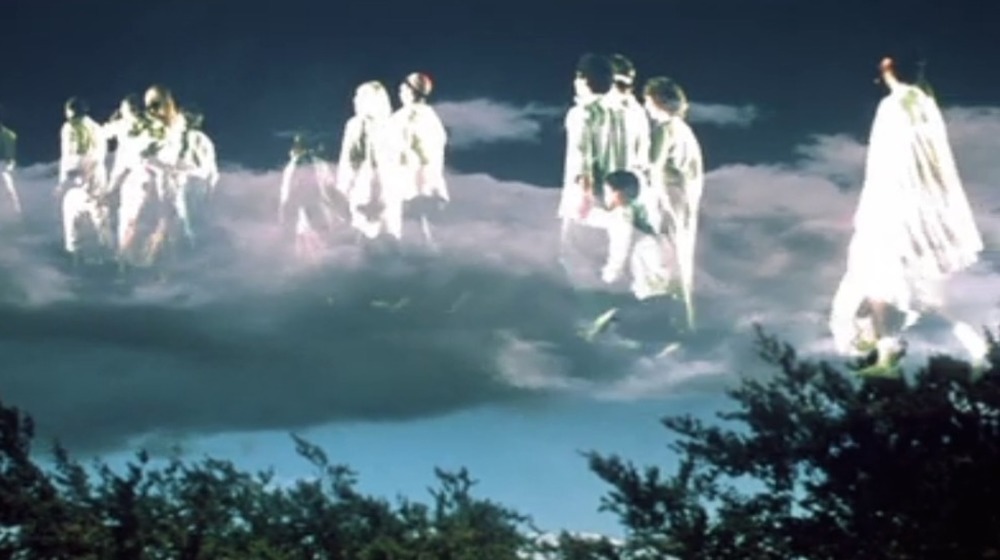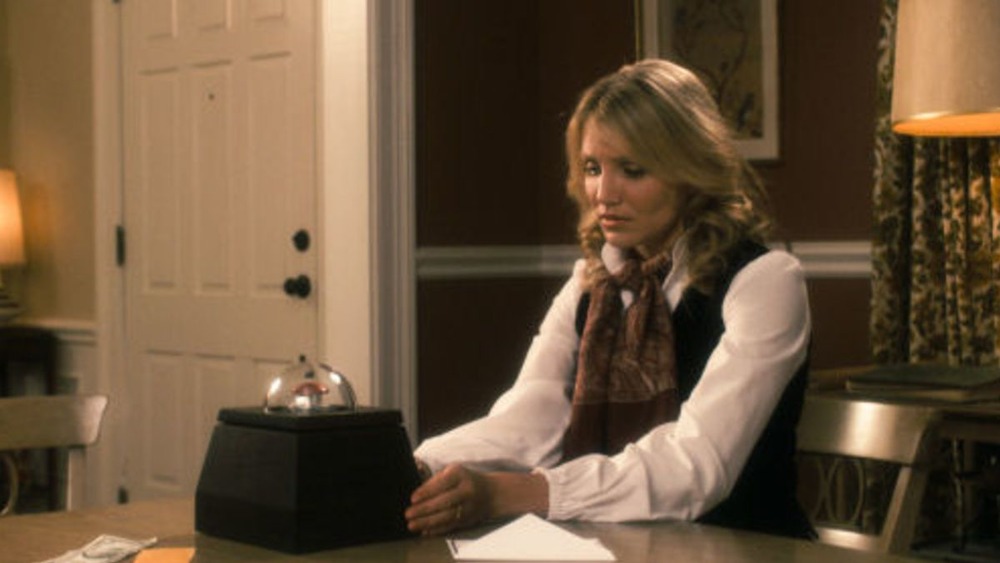Director Decisions That Went Horribly Wrong
We love to celebrate the fearless artists of the movie world who mold their movies according to their own personal visions and won't let meddling corporate executives, money troubles, or even the elements stop them. The trouble is, not every vision is worth fighting for. And the obstacles that directors persevere against to bring their movies to the screen often include plain old common sense.
Today, we'll see directors who endangered their crews, doomed themselves to box office failure, and spat in the face of good taste and logic, all in the name of movies of questionable quality ... at best. These are the dreamers, the dictators, and the all-around dingbats. These are filmmakers who cared too much about their own personal instincts to trust anyone who told them no or who cared too little about their work to listen. For whatever reason, all these directors made terrible decisions that went horribly wrong.
Roland Emmerich made a Godzilla movie even though he didn't like Godzilla
There are few movie icons quite like Godzilla. He's been everything from a soul-chilling metaphor for the horrors of atomic war and a cuddly childhood friend to a shape-shifting abomination and the spirit of the Earth. So when a movie departs so far from that wide range of characterization that fans refuse to acknowledge it as the real deal, you know something's gone horribly wrong.
Roland Emmerich seemed like a natural fit for a Godzilla reboot after attracting enormous audiences to watch him level the world in Independence Day. But he had no interest in the original city-stomper. According to his screenwriting partner, Dean Devlin, "It wasn't something that Roland had grown up with. He didn't have a giant passion about Godzilla." Maybe that's why Emmerich's monster is so un-Godzilla-y — a mutated iguana with a Jay Leno chin who hardly looks anything like his Japanese counterpart. The film even loses interest in her (yes, this Godzilla is a her) in the climax to focus on a horde of mini-Godzillas, the better to ride the moneymaking coattails of Jurassic Park and its animated velociraptors.
This didn't have to be a deal-breaker. After all, Godzilla never quite took off in the US like he did in Japan. Most audiences don't know much about him except he's big and scaly, and this version of Godzilla at least delivered that. But Emmerich's disinterest must have been palpable because even a total media blitz couldn't save Godzilla from barely clearing its budget in stateside grosses.
Roland Joffé put an R-rated spin on The Scarlet Letter
Since its publication in 1850, Nathaniel Hawthorne's The Scarlet Letter has been universally accepted as a peak of American literature, and it's become a staple of school syllabuses. Hawthorne's timeless story of Hester Prynne, a married woman who's ostracized from her Puritan community for bearing another man's child, seems like the definition of "if it ain't broke, don't fix it."
But somehow, Roland Joffé thought he knew better than one of America's most beloved authors. The Scarlet Letter satirizes Puritan hypocrisy, but there's not much in it even a literal Puritan could object to. So naturally, the best way to adapt the story was to reinvent it in the mold of the erotic thrillers that were so popular in the '90s. With Demi Moore as Hester and Gary Oldman as her lover, Arthur Dimmesdale, the movie mostly ignores the moral quandaries in the aftermath of their affair and focuses on the affair itself, which Hawthorne barely mentioned.
And Joffé somehow managed to make the movie more racist than a book from 1850, adding attacks by stereotypically "savage" Native warriors that were nowhere in the novel. Joffé probably wanted to make it more commercial, but he couldn't have failed more miserably. The Scarlet Letter flopped so hard it that killed the whole erotic thriller genre. But at least it made lazy students' book reports more interesting!
Rocky Morton and Annabel Jankel turned Super Mario Bros. into a dino dystopia
In 1993, the Mario Bros. were on top of the world. Gamers had piloted Mario and Luigi through dozens of games that earned Nintendo millions of dollars around the world. With such a huge built-in audience, you'd assume that Disney (via Hollywood Pictures) would want to make sure their movie adaptation gave fans what they wanted. Instead, Disney replaced the colorful Mushroom Kingdom with the grungy, ugly Dinohattan, and then the draconian villain King Koopa turned into Dennis Hopper with a CGI tongue and a bad haircut. They even shaved Luigi! Viewers were left wondering what happened.
What happened was Rocky Morton and Annabel Jankel. As the creators of the TV phenomenon Max Headroom, they were trusted with complete freedom on the project, helped in no small part by Nintendo's apathy towards it. They admitted they hadn't played the game before signing on, which may explain why so much of the movie only looks like it if you squint real hard. Morton and Jankel's free pass expired before they finished production, but it was too late to override their decisions. If anything, the studio-mandated prologue to explain just what Dinohattan was (so cheaply thrown together it looks more like a kiddie computer game than a real movie) only made things more confusing.
You can argue whether Morton and Jankel's decisions were creatively wrong, but there's no doubt they were financially disastrous. The film grossed less than half its budget and ensured Jankel wouldn't make another movie for another 25 years — and Morton still hasn't recovered.
Uwe Boll used actual video game clips in House of the Dead
For years, it's been conventional wisdom that video game movies are cursed to never be any good. And no one's more responsible for that perception than Uwe Boll, who adapted Alone in the Dark, BloodRayne, Far Cry, and others before the game industry apparently wised up and quit selling him rights. Rumors say that it's actually in his best interest to make terrible movies. Until recently, German tax law allowed investors to write off the expense of financing a movie and only pay taxes on their profits. In other words, the less Boll's movies made, the richer he got, like a real-life version of The Producers.
It's hard to think of a better explanation for one memorable decision in Boll's House of the Dead. His first game adaptation, it pits an assortment of ravers, smugglers, and cops against zombies on a tropical island. It's not the most faithful adaptation, but it takes one aspect directly from the game, and we do mean directly. During the cast's shootouts with the living dead, Boll occasionally interrupts the live-action footage with animated shots from the game. The arcade game, mind you. If you look closely, you can actually see messages to "insert coins" or "push start!" It'll give you whiplash seeing the action jerk from a forest in the dead of night to a brightly lit castle. At one point, you'll even see seizure-inducing flashes of a headless knight for no apparent reason at all.
Cannibal Holocaust's kayfabe landed Ruggero Deodato in court
Love it or hate it (and most people hate it — for a while, it was illegal to even show it in about 40 different countries), Cannibal Holocaust revolutionized the horror genre, anticipating the emergence of found-footage horror by decades. In this 1980 film, a team of anthropologists venture into the Colombian jungle to search for a documentary crew who'd disappeared years earlier while investigating an isolated, cannibalistic tribe. There, they find a film canister that shows the crew's grisly, gory fate. Needless to say, the resulting movie is pretty shocking, and critics accused director Ruggero Deodato of racism, animal cruelty, and senseless, exploitative violence. The Italian courts went one step further and accused him of murder.
Deodato's goal with Cannibal Holocaust was to make a horror movie that was extra horrifying because it all could be real. He went the extra mile to establish its authenticity by writing a term into several actors' contracts that they couldn't make public appearances, in order to create the illusion they'd really died. It worked a little too well. Deodato found himself in court having to prove he hadn't murdered his actors for real! He was eventually acquitted thanks to demonstrations of his special effects and the testimony of the "murdered" actors. But a little less showmanship would've saved him a whole lot of headaches.
Noel Marshall almost turned Roar into a snuff film by using wild lions
Say what you like about the rest of these movies, at least none of them actually got anyone killed. Neither did Roar, but it wasn't for lack of trying.
Together with his then-wife, The Birds star Tippi Hedren, director Noel Marshall decided to make a movie about a wildlife preserve full of animals gone wild, featuring 150 lions, tigers, and other big cats, almost all of them untrained. Hedren says that the animal trainers they consulted laughed at the absurdity of the idea. The results were predictably disastrous. Both Hedren and costar John Marshall got bitten on the head, Hedren's on-screen and real-life daughter, Melanie Griffith, was mauled so badly she needed facial reconstruction surgery, and cinematographer (and future Speed director) Jan de Bont needed 120 stitches. And as for Noel Marshall himself? Hedren said (via Variety) that he "was in the hospital so many times they were going to name a wing after him." She went on to say, "I don't know how we survived it. Our nine-month shoot turned into five years."
All the crew's blood, sweat, and tears (but mostly blood) almost amounted to nothing. Marshall's Hollywood backers lost interest in Roar after it went years overtime and millions over its budget, and it went unseen until the Alamo Drafthouse unearthed it decades later. They advertised to a new audience with the tagline, "No animals were harmed in the making of this movie. 70 members of the cast and crew were."
Mark Region thought it'd be a good idea to use cardboard props in After Last Season
We won't insult your intelligence by claiming 2009's After Last Season has a plot, but it does involve some medical students and some mumbo jumbo about connecting minds by microchips to predict crimes (the students react to this shocking discovery with mild boredom). But because that would be too exciting, the movie spends 90% of its runtime on the kind of boring small talk that most movies cut out, and it soon becomes excruciatingly obvious why they do.
The movie also has a cardboard MRI machine, a couple boxes standing in for a building, and another shot of that same building with the nameplate obviously (and sloppily) superimposed digitally. Corporate offices are identified by sheets of printer paper, which are lit so badly you can't even tell what they say half the time. The logic behind these decisions isn't just confusing, it's downright backwards. A hot pink bedroom plays a hospital, but a dorm room is played by a dank basement! Exposition is delivered by "newspapers" that were obviously printed off a home computer. Well, director Mark Region told Filmmaker Magazine, "It was supposed to be a sheet of paper the person printed out after reading Yahoo News." Sure, Jan.
Somehow, it cost $5 million. For comparison, Moonlight cost just over $1 million and features zero cardboard props. As Region explained it, "Additional money only came several months later for the special effects and for the computer animation." But given that the film's computer animation would've looked cheap even back in 1980, we still have questions.
W. Lee Wilder tried to scare audiences with googly eyes in Killers from Space
The drive-in theaters of the '50s and '60s were full of low-budget monster movies that tried to scare viewers the best they could on the cheap. The subgenre gave us snaggletoothed turkeys, sad-eyed crab monsters, and gorillas in diving helmets, but few were quite as ridiculous as the alien invaders in Killers from Space.
The film's director-producer, W. Lee Wilder, is the less successful brother of the great director Billy Wilder. While Billy was winning Oscars and acclaim for timeless classics like The Apartment, Some Like It Hot, and Double Indemnity, W. Lee was making ... Killers from Space. Can you imagine how tense Thanksgivings must've been at the Wilder house?
In Killers from Space, Airplane!'s Peter Graves plays a nuclear scientist who mysteriously survives a plane crash at an atomic bomb test site. We learn he's actually been abducted by aliens who are secretly controlling him so they can steal atomic secrets.
When we finally meet these "killers from space," they're much less than impressive, mostly because they wear ping pong balls over their eyes that make them all look like Homer Simpson. Half the time, Wilder didn't even bother to make sure their eyes were facing the same direction, and other times, they're obviously seconds from falling out. It's a hilarious image, especially in contrast with the deadly seriousness the actors try to invest their lines with. You might think it stops being funny after the first few minutes, but googly eyes are truly the gifts that keep on giving.
M. Night Shyamalan added an evil critic to Lady in the Water
Director M. Night Shyamalan was on top of the world after he made The Sixth Sense. Newsweek named him "the next Spielberg." That's a "life comes at you fast" meme if we ever saw one because his standing went steadily downhill from that moment on. His career jumped from the warm but not ecstatic reception to his follow-up, Unbreakable, to the cooler reaction to Signs, and finally, there was the outright hostility to The Village and its baffling plot twist.
And then came Lady in the Water.
Lady in the Water was a departure from his previous run of horror movies and dark thrillers, a fairy tale based on an actual bedtime story he told his kids, one where Paul Giamatti finds a water spirit named Story (Bryce Dallas Howard) in his apartment building's swimming pool. The script calls her a "Narf" — apparently, Shyamalan shared co-author credit with Pinky and the Brain.
All that fairy tale whimsy makes Lady in the Water's lone horror-style kill even more out of place. But you see, Shyamalan didn't exactly take his fall from favor with stoic grace. The unlucky character who gets mauled by one of the monstrous "Scrunts" hunting Story is a film critic played by Bob Balaban, who spends the whole movie embodying every mean potshot a filmmaker could take at the press corps.
As you might imagine, this didn't help the movie's critical standing. But then, since Shyamalan also cast himself as a messianic writer whose book is destined to change the world, it probably didn't have much chance anyway.
Menahem Golan brought in God out of nowhere to wrap up The Apple
Israeli-American producer Menahem Golan had a heavy hand in many of the most spectacularly — and entertainingly — terrible movies of all time. We're talking 1990's Captain America, Death Wish III, and basically every Chuck Norris movie ever made. So you can imagine what happened when he directed a movie himself.
The Apple is a wonderful, indescribable mess of a movie. Made at the start of the 1980s, its futuristic-disco world is still somehow the most '80s thing ever filmed. This world is ruled by the evil record producer Mr. Boogalow, who demands everyone drop what they're doing once a day and dance to his songs. He's opposed by a folk duo who resist his offers of wealth and fame (and in one of the movie's many hilarious incongruities, their "authentic" music is more soulless and processed than anything else on the soundtrack). But nothing in the film is quite as inexplicable as the ending, where it seems Boogalow has won, but the hero comforts the heroine with, "Don't worry, Mr. Topps is coming."
Who's Mr. Topps? Before we get an answer, he's already there to take all the good guys to heaven, and just like that, the movie's over.
The screenwriters were horrified to see what Golan had done to their story, especially that ending. Mr. Topps went from a major character to a non sequitur, and Joss Ackland, who played him, said on The Project Booth Podcast, "Heaven was three-quarters of the script. It was the whole point of the movie." We haven't read that original screenplay, but we can say that The Apple plays like a movie with three-quarters missing.
Richard Kelly threw everything and the kitchen sink into The Box
As the cult around his debut film, Donnie Darko, grew after its release on home video, it must've seemed like Richard Kelly could do no wrong. But his baffling follow-up, Southland Tales, proved he very much could, at least as far as mass appeal went. Its budget outpaced its return by a good couple of zeroes. But Hollywood gave its weirdo wunderkind a second chance with The Box. It's based on a short, simple story by I Am Legend author Richard Matheson, and at least one critic predicted these constraints would help Kelly rein in some of his wilder excesses.
Nope. Instead, Kelly expands the story of a married couple (Cameron Diaz and James Marsden) who get a chance to trade a stranger's life for $1 million, with, in one critic's words, "enough ideas for a dozen movies (all of them bad)." Or, as SNL's Stefon might say, this movie has everything. Alien conspiracies at NASA. Lightning-based meat puppets. Cameron Diaz with no toes. An evil Salvation Army Santa Claus. Frank Langella with a perspective-defying CGI scar. Jean-Paul Sartre. Nosebleeds. That might sound exciting, but Kelly doles out all this weirdness so slowly and self-seriously that it's anything but. Even the evil Santa hardly gets anything to do.
It was all too much for the moviegoing public. The Box didn't just flop, it's one of only a handful of movies that opening-night audiences gave an F in Cinemascore's 40-year history.
